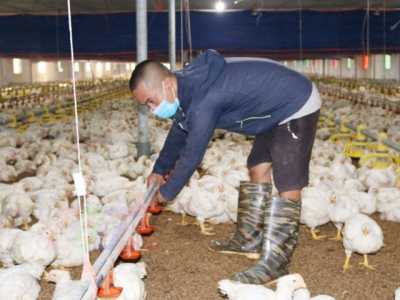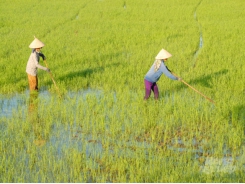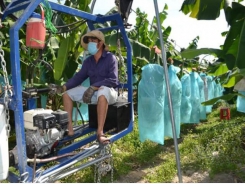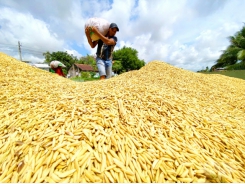The readiness for integration of the poultry husbandry sector

Waves of investment from enterprises in the livestock sector, especially poultry farming show that most private and FDI enterprises choose the field of breeds to invest in.
The investment in the field of poultry processing is very humble compared to the field of breeds.
The international economic integration in the recent period has promoted the development of the poultry and chicken industry, meanwhile having the participation of FDI enterprises making the foreign investment into Vietnam.
Another thing is that businesses in the country also switch to developing in the direction of poultry, especially chicken farming. At the same time, Vietnamese breeding households are growing, gradually accessing technologies and developing.
One of the important aspects is about the breeds. The fact that Vietnam imports high-productivity breeds and that contributes a lot to the growth, creating favorable conditions and playgrounds for businesses and breeding households to further develop.
However, there are other distinct market shares for enterprises, so they tend to develop high-productivity breeds, rearing in a closed chain to create exportable products; SMEs and breeding households, who still occupy quite a large proportion in the livestock industry, will follow the path of developing indigenous poultry breeds, possessing high quality and productivity, creating unique brands for each region.
Waves of investment from enterprises in the livestock sector, especially poultry farming show that most private and FDI enterprises choose the field of breeds to invest in, while the investment in the field of poultry processing is very humble compared to the field of breeds.
As a matter of fact, in the whole livestock industry, including poultry farming, among the existing phases, the production of breeds brings quite high profits in the chain. Consequently, enterprises, domestic or FDI, all pay more attention to the high efficiency in profit, which is, the production of breeds.
Meanwhile, in the context that in Vietnam household farming still occupies a very large proportion, above 60% in number and almost 60% in volume. And so, this “household farming” block is basically still not active in terms of breeds, therefore resume purchasing from enterprises and breeding facilities, creating advantages for enterprises to further invest in the production of breeds.
There are three phases: first, production; second, slaughtering, processing and circulation; and third, consumption. One of Vietnam’s current weak phases is the centralized slaughtering and processing phase. Therefore, in the (2021 - 2030 Livestock development strategy, with vision to 2045, Vietnam should strive to achieve about 40% for centralized slaughtering and about 30% for processing in 2025, and make an effort in 2030 to reach about 50% for centralized slaughtering and above 40% for processing.
At present, major enterprises and farms can meet demands for export.
Regarding animal husbandry costs, actually, if the integration deepens, Vietnam’s poultry husbandry sector gains more access to new breeds and advanced technology, the price should drop little by little.
However, in the past period, there is this paradox because the outbreak of diseases on humans such as the Covid-19, then diseases on cattle and poultry have been disrupting the global supply chain, affecting the domestic and global production cost.
“In order to follow the integration trend, Vietnam still has to act according to the Livestock development strategy in the 2021 - 2030 period, 2045 vision, strengthen the industrial livestock development, take in the science and technology of the world, and at the same time research, select and improve domestic productivity so that we can somehow reduce the costs. That is the most important thing for us to be capable of competing in the current integration period,” says Mr. Nguyen Quy Khiem, Director of Thuy Phuong Poultry Research Center (National Livestock Institute).
Sharing views as of National Agricultural Extension Center (Ministry of Agriculture and Rural Development, MARD), Mrs. Ha Thuy Hanh - the Deputy Director says: We promote chain-link models in order to help farmers apply new breeds and technologies, suitable for domestic consumption demand and exports. In fact, we have been making transfers from 2010 until now. When Decree No. 02 regarding agricultural extension is issued, we have transferred 22 big projects on poultry, including 16 projects on chicken and 6 on waterfowl. These projects are highly evaluated by the localities because we use new breeds, which are from research institutes such as local poultry centers, major poultry centers. For units keeping original breeds, we also transfer using this method; next is technological procedures, how these can be applied to ensure good farming processes; the third is the application of bio-safe farming programs, making sure that farming is sustainable, free of diseases and lower in costs, which is also an advantage.
However, integration also poses many requirements.
The first is standards and norms to be certain of importers’ demand. The second thing is that the products must guarantee food safety, consistency, output that follows certain processes, and traceability.
“We assess that, at present, major enterprises and farms can meet these demands for export, and small farms, households or livelihood development zones have gradually been making their approach. We also hope to implement agricultural extension programs so that we can both supply good breeds, technologies, procedures, and the people can do bio-safe farming to secure disease management on poultry as well as livestock in general,” says Mrs. Hanh.
Related news
Tools

Phối trộn thức ăn chăn nuôi

Pha dung dịch thủy canh

Định mức cho tôm ăn

Phối trộn phân bón NPK

Xác định tỷ lệ tôm sống

Chuyển đổi đơn vị phân bón

Xác định công suất sục khí

Chuyển đổi đơn vị tôm

Tính diện tích nhà kính

Tính thể tích ao




 Approximately 100% of China’s dragon fruit imports from…
Approximately 100% of China’s dragon fruit imports from…  Good signs for early autumn-winter paddy rice
Good signs for early autumn-winter paddy rice